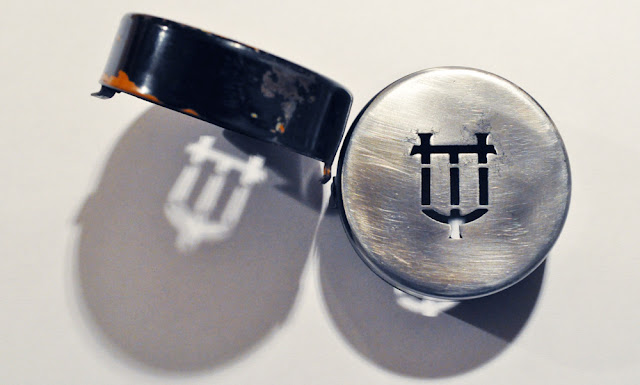I'd harboured a hope that after the first application of Nitromors, I would be able to restore this 1930 Underwood 4 to its original finish. I tried to control the degree of paint removal by applying the paint stripper and leaving it for only short periods before rinsing and scrubbing it. But the glimmer quickly turned into a gleam as the aluminum began to show through, both as normal wear patches at the corners of the keyboard and elsewhere.
The original black was largely intact but the rear gold decals on the back were already softened and blurred by my first attempts and the original clear laquer had come off with the brown enamel. This left the black dull and lifeless.
I'd generally consider it a sacrilege to rub down to bare metal on such an old typewriter but there wasn't much option to do anything else. I could have left it partially stripped but I'm not going to beat myself up about it. After the application by its former keeper of the brown enamel, this was never going to make a museum quality specimen - I reckon they made quite a few of this model. After a minute's reflection, I decided to go for it. The frame and front plate are both aluminium but the paper table and ribbon covers are steel and seem to be painted with different stuff which is harder to get off.
On the aluminium, I'm using 400 grit wet paper which I'll follow with 0000 grade steel wool, finishing up with Autosol chrome and alloy polish. I tried this routine on the back as a test and it seems to work OK.
After finishing, I'm not sure whether to clear laquer it to preserve the polished finish or paint it with some design or other. Suggestions welcome!








